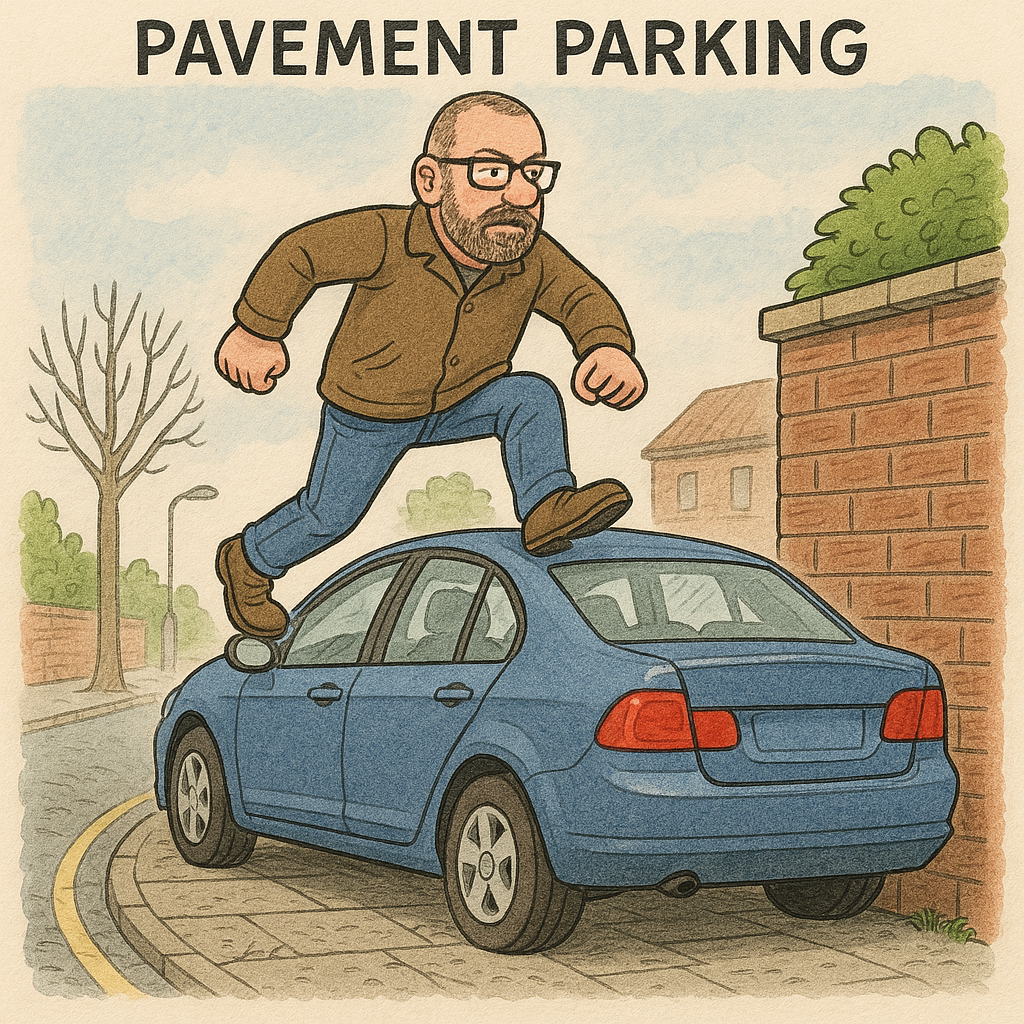There is no finer example of modern civic lunacy than the noble art of pavement parking.
Once, the pavement was a sacred place, a realm for pedestrians, prams, and the occasional dog with urgent business. Now? Now it is a gauntlet, an assault course devised by suburban sadists armed with Ford Mondeos and a complete lack of spatial awareness.
The principle is simple: if you own a car, you may deposit it wherever you like, so long as at least 50% of it remains attached to the road. The other 50%—often the bulkiest, muddiest half—is thrust indignantly onto the pavement, leaving a space so narrow that even a malnourished ferret would struggle to squeeze through.
Of course, motorists will defend this practice with great sincerity. “Where else am I supposed to park?” they wail, as if the very suggestion of a designated parking area is the ravings of a madman. “The road is too narrow!” they continue, blithely ignoring the fact that it is only narrow because every available inch of it has been colonised by their own beloved automobiles.
And so, the humble pedestrian must navigate this perilous landscape. Elderly citizens find themselves forced to step into oncoming traffic, mothers with pushchairs develop the dexterity of Olympic gymnasts, and anyone in a wheelchair simply has to accept their fate and take up residence at the nearest impasse.
The worst offenders, of course, are those who, in a fit of unbridled civic responsibility, leave a precise two-inch gap between their car and a brick wall, as if convinced that the average pedestrian is a two-dimensional being capable of flattening themselves like a cartoon character. They will then emerge from their front doors, see you struggling to edge past like an overweight crab, and offer a benevolent nod as if to say, “There you go—plenty of room.”
The only possible retaliation is to adapt. Pushchairs must be fitted with hydraulic lifts, walking sticks should come with extendable grappling hooks, and pedestrians must adopt the litheness of a cat burglar, leaping over bonnets and slithering under exhaust pipes in an ongoing battle for the right to move freely. Either that, or we take a leaf out of the motorists’ book and simply abandon all pretence of civility, walking straight over any vehicle that dares encroach upon our sacred footpaths. If they can treat the pavement like a car park, why can’t we treat their car like a pedestrian walkway?
But no, that would be considered unreasonable. Unlike, say, forcing every person on foot to squeeze past a Nissan Qashqai wedged into the last available scrap of oxygen.
One day, perhaps, pavements will be returned to the people. Until then, we must accept our new reality: the daily suburban obstacle course, brought to us by the twin forces of laziness and bad parking.
